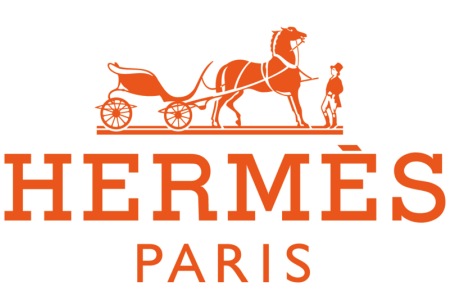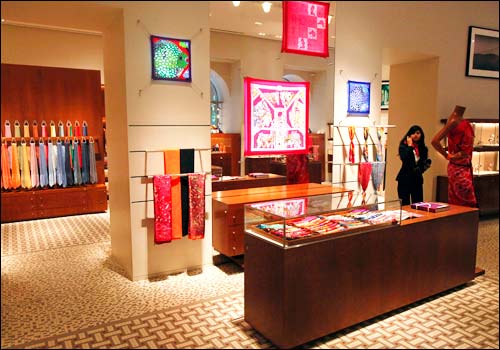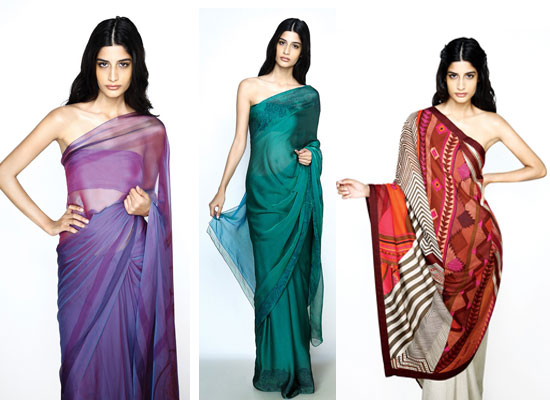
A few months ago couture designer Hermes entered the Indian market. And late they were. Louis Vuitton and other haute couture brands had already been in India for a few years, leaving the horse drawn carriage off to a slow start.
But Hermes had something up their sleeve, or rather, choli. They hand crafted 28 saris as part of the Mumbai store launch and in time for Diwali shopping.

I had a chance to visit the store and see these saris in person. Unfortunately I do not have a photo of the remaining two saris (was prohibited) I saw but here’s a stock photo from Hermes of three of the saris on sale. Talk about whitewashed promotional photographs! Were they unable to find a stylist, a background, and a good photographer?

They were unimpressive; mundane. The first sari I saw was a plain bright marigold-orange with only the pallu with a design. That ‘design’ was four narrow panels of different Hermes scarves stitched together. And it was available for Rs 4.5 lacks ($9,000).
The stitching between the panels on the orange sari looked not just hand done, but done by an old man who needed glasses. And the orange, oh my. Let’s just say you better be a BJP political party supporter to pull off that color orange.
The second sari, a purple’ish georgette, similar to sari in the upper left of the photo, was even less satisfying than the first. While it has some lovely wisps of hand painting, it was nowhere near the worth of Rs 3.5 lacks ($7,000). The sari also looked limp and near impossible to drape nicely.
The highlight of craftsmanship was seeing the Hermès tag hand painted – took one whole day to write “Hermès Made in France”!
Granted, since I went to the showroom on the last day of Diwali, I was going to only see the leftover rejects. While I was impressed with Hermès attempt to design saris in the emblematic scarf style and with minimalist design, I doubt anyone would notice the sari if worn on a celebrity or otherwise.
No matter what, Hermes sold all their saris because these are status symbol pieces. Hermes may not make saris for another ten, twenty, or 100 years, so buying one now is an investment piece.
I hope that if the boutique ever creates Indian saris again, they go with minimalist, Indian elegance.
